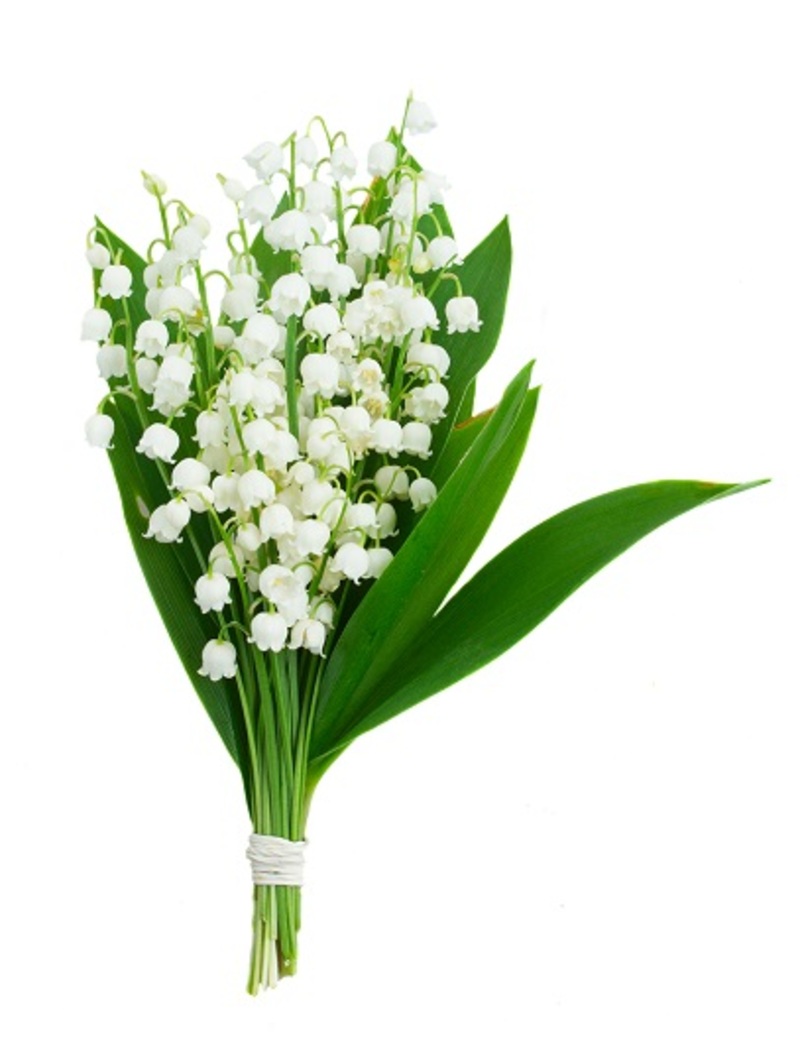Give your flowers a longer life with these easy preservation practices
Posted on 01/09/2025
Give Your Flowers a Longer Life with These Easy Preservation Practices
Fresh flowers are a delightful addition to any home or event, but their beauty is often fleeting. Fortunately, you can extend the life of your blooms with a few simple yet effective preservation techniques. Whether you've received a gift bouquet, picked wildflowers, or arranged a decorative centerpiece, knowing how to give your flowers a longer life can help you enjoy their color and fragrance for days or even weeks longer.
Understanding Flower Longevity
Before diving into the specific flower preservation practices, it's important to understand why flowers wilt and what factors influence their lifespan. Flower longevity is determined by:
- Type and variety of flower (some naturally last longer)
- Quality and age when cut
- Environmental conditions (temperature, humidity, sunlight)
- Water and nourishment
- Handling and care techniques
With this knowledge, you can take targeted steps to maximize the vase life of your cut blooms.

Preparing Your Flowers for a Longer Life
1. Clean and Trim Stems Properly
The first step to prolonging your flowers' life starts from the moment you receive or cut them. Dirt, bacteria, and air pockets in the stems can hinder water uptake. Follow these steps to keep flowers fresh:
- Remove any lower leaves that will be submerged in water to prevent rot and bacterial growth.
- With clean, sharp scissors or a knife, cut each stem at a 45-degree angle. This increases the water-absorbing surface area.
- Cut stems under running water or submerged in water to avoid air pockets from entering the stems.
- Re-trim stems every few days for optimal water uptake.
2. Choose the Right Vase and Clean It Thoroughly
Bacteria and fungus can quickly accumulate in dirty vases, shortening your flowers' lifespan. Here's how to ensure a safe environment:
- Wash vases with hot water and mild soap.
- Rinse thoroughly to remove any detergent residue.
- Sanitize with a solution of 1 part bleach to 10 parts water, then rinse well.
- Ensure vases are the right size: crowded stems reduce airflow and increase rot risks.
Effective Water and Nourishment Practices
1. Use the Right Water Temperature
Different flowers have different water temperature needs:
- Most flowers: Room-temperature water is ideal.
- Bulb flowers (e.g., tulips, daffodils): Prefer cool water.
- Wilted flowers: A brief dip in warm water can revive them.
2. Change Water Regularly
Fresh, clean water is essential to keep flowers alive longer:
- Replace the vase water every 2 days, or sooner if it becomes cloudy.
- Rinse the vase and re-trim the stems before refilling.
- Add flower preservative (see below) each time you change the water.
3. Use Flower Food or Homemade Preservatives
Commercial flower food provides nutrients, manages pH, and fights bacteria. If you don't have commercial flower food, try these common household alternatives to extend the vase life of fresh flowers:
- Bleach Solution: Add 1/4 teaspoon of bleach per quart of water to control bacteria.
- Sugar and Vinegar: Mix 2 tablespoons of lemon juice, 1 tablespoon of sugar, and 1/2 tablespoon of bleach per quart of water.
- Coins and Aspirin: Dropping a copper penny and a crushed aspirin into the vase can inhibit bacteria (though less effective than commercial food).
Tip: Avoid using too much sugar, which can encourage bacterial growth without an acidifier.
Maintaining Ideal Environmental Conditions
1. Keep Flowers Cool
Heat is one of the main culprits behind wilting. Give your bouquets a longer life with these tips:
- Display flowers away from direct sunlight, heat sources, and electronics.
- Keep flowers in a cool room at night, or refrigerate them (away from fruit) for a few hours to increase longevity.
2. Avoid Ethylene Gas
Fruits like apples, bananas, and pears emit ethylene gas, which rapidly ages flowers. To preserve flowers for longer:
- Keep arrangements away from fruit bowls and produce storage.
3. Control Humidity
While fresh flowers need water, too much air moisture can cause fungal growth. To strike the right balance:
- Use a humidifier in dry climates but avoid excessively steamy bathrooms or kitchens.
- Ensure good air circulation around your vases.
Advanced Preservation Techniques
1. Drying and Pressing Flowers
If you want to preserve flowers for months or years, consider drying or pressing them. This not only extends their visual appeal but also lets you incorporate blooms into crafts and decor.
- Air Drying: Gather flowers in small bunches, remove leaves, and hang upside down in a cool, dry, well-ventilated area out of direct sunlight.
- Pressing: Place blooms between sheets of absorbent paper and weight down with heavy books for several weeks.
- Silica Gel Drying: Bury flowers in silica gel crystals for fast, color-preserving drying (found in craft stores).
- Microwave Drying: Use a microwave flower press or silica gel in short bursts for rapid dried flowers.
Preserved flowers can be used in framed art, wreaths, or keepsake arrangements.
2. Wax and Glycerin Preservation
- Wax Dipping: Dip blooms in melted paraffin wax (cooled to 120-130?F), shake off excess, and let harden. This seals in moisture for several weeks.
- Glycerin Soak: Submerge stems in a 2:1 mixture of water and glycerin for 2-3 weeks. Leaves and petals will absorb glycerin, resulting in supple, long-lasting flowers.
Common Mistakes to Avoid
Even with the best intentions, simple errors can shorten the life of your arrangements. Watch out for these pitfalls:
- Using dirty vases or tools.
- Neglecting to remove wilted leaves or petals which harbor bacteria.
- Allowing stems to sit out of water for too long before arranging.
- Overcrowding the vase or failing to re-cut stems regularly.
Extra Tips to Prolong Flower Life
- Add an ice cube to the water for certain varieties like hydrangeas and tulips.
- Mist blooms lightly with water--especially orchids and tropicals--for added hydration.
- If a bloom begins to wilt, re-cut its stem and submerge in warm water for 30 minutes to revive.
- For woody stems (roses, lilacs), split or pound the bottoms to aid water absorption.
Climate and Seasonal Considerations
Some flowers last longer in cooler climates, while others thrive in humid or warm environments. To maximize freshness, it's wise to:
- Choose seasonal flowers whenever possible--they tend to last longer as they're less stressed by transport.
- Adjust care routines for local weather, such as more frequent water changes in summer.
The Benefits of Prolonged Flower Life
Why should you strive to give your flowers a longer life? Beyond beauty, the benefits include:
- Sustainability: Getting more enjoyment from your flowers reduces waste and your need to purchase replacements.
- Cost-effectiveness: Prolonging bouquet life saves money, whether you buy, grow, or receive your blooms.
- Mood-enhancing: Longer lasting flowers create a positive, uplifting home environment for more days.

Frequently Asked Questions: Extending Flower Longevity
How often should I change the water for cut flowers?
Every 2-3 days is ideal. Always rinse the vase and re-trim stems at the same time for best results.
Do flower preservatives really work?
Yes! Commercial preservatives are scientifically designed to feed flowers, manage pH, and control bacteria--essential for extending vase life. Homemade alternatives can be effective but may not offer the same comprehensive protection.
What types of flowers last the longest after cutting?
- Carnations
- Chrysanthemums
- Alstroemeria (Peruvian lily)
- Orchids
- Zinnias
Flowers like lilies, tulips, and sunflowers also last well but may require more attentive care.
Can I revive wilted flowers?
In some cases, yes! Try re-cutting stems under water and placing the flowers in warm water for 30-60 minutes. Mist lightly and keep in a cool spot; some wilts are irreversible, but many can be reversed with prompt action.
Final Thoughts: Enjoy Blooms That Last Longer
Giving your flowers a longer life is easy with a little knowledge and care. By preparing blooms properly, maintaining clean water, providing nourishment, and controlling their environment, you can enjoy vibrant, fresh flowers for far longer than you might expect. Try these techniques, and you'll transform every bouquet into a long-lived centerpiece of beauty in your home or special event.
Remember: Simple changes in handling and care can maximize the life of your fresh flowers--so you can keep enjoying their beauty and fragrance day after day.
Latest Posts
Peony Flowers: A Symbolic Dance of Colors and Meaning
Harmonize Your Orchids with Their Environment
The Enduring Appeal of Red Roses on Valentine's Day
Give your flowers a longer life with these easy preservation practices







